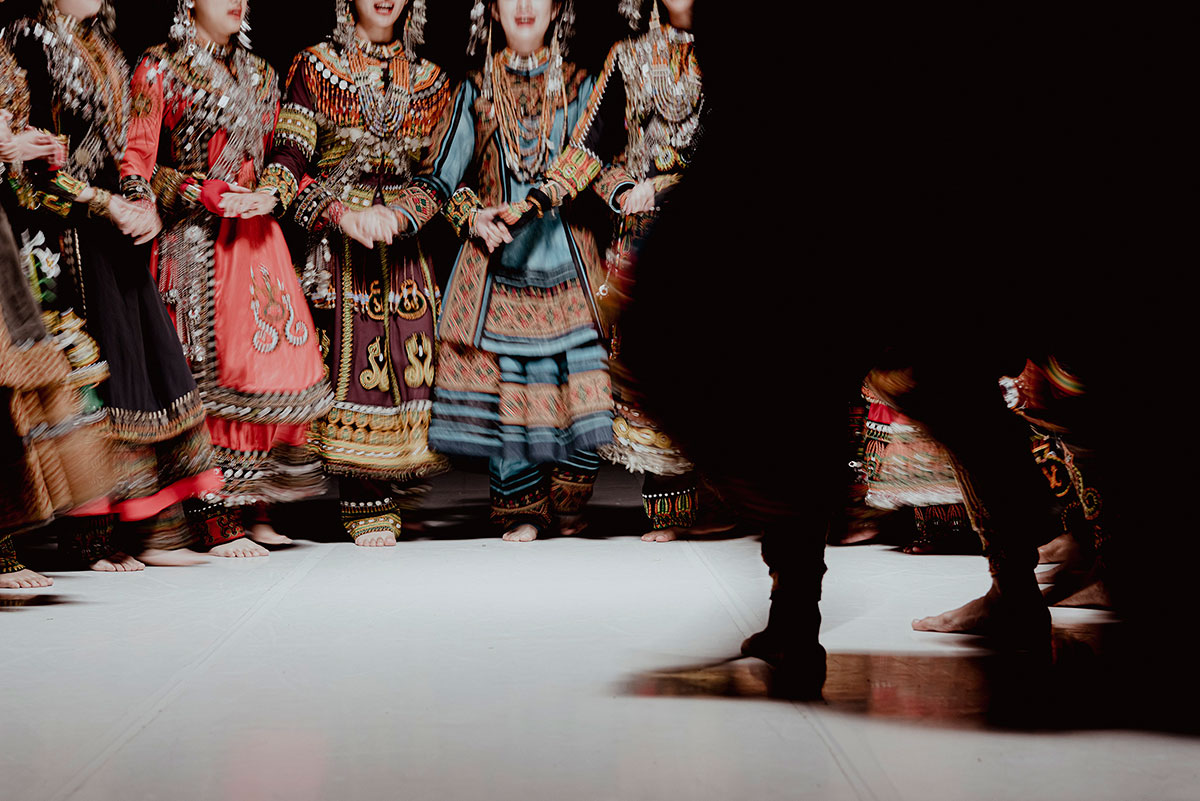Tjimur Dance Theatre

Varhung
- 2022, four-channel video, 16 min 4 sec.
- Courtesy of the artist.
Curatorial Perspective
The concept of Varhung was developed by Ljuzem Madiljin, the head and artistic director of Tjimur Dance Theatre. The work explores the traditional culture of the Paiwan tribe in this performing arts-based exhibition based on four aspects: “the influence of song on dance movements,” “sound guidance,” “transformation of breathing,” and “sound creation.” In this work, breathing drives the body, and the nature of physical movement derives the pulse, drawing out the axes of a “song-inspired dance” and the “transformation of breathing,” while responding to the Paiwan meaning of “Varhung” (the body of sound) in the contemporary context. This “birth of sound” makes use of the “life” starting from breathing and extending to the internal connotation of life to introduce a process of indigenous traditions and contemporary innovation through “sound guidance” and “sound creation.” Tjimur Dance Theatre starts with the breathing rhythm of singing ancient ballads to show the possibility of transforming a traditional indigenous presence to a contemporary one, moving from the tempo of “Zeminyan” (a traditional Paiwan four-step dance) towards a metaphor integrated with the Paiwan mythology. In the traditional singing of Paiwan ancient ballads, dancers blend the rhythm of singing and breathing to create the dance flow. Breathing, as the foremost sign of life, marks the body’s response to the connection between the soul and breath. The dancers’ bodies sway along with their articulating movement of singing. By placing the center on the lower body, the dancers solidly step on the ground; and as their feet bounce back from the floor, they shift their center along, creating a smooth, continuous movement of stepping on and jumping off the floor. A steady and coordinated rhythm is thus produced, and is subsequently converted into a formal vocabulary of “the Paiwan contemporary dance.” At the same time, the dance artistic director Ljuzem Madiljin and the choroegrapher Baru Madiljin have inherited the legacy from their father’s generation, and thus invited Lin Wen-Chung, who share their background in folk dance, to conduct a residency and choreograph a dance with them, as a way to revisit the complicated colonial history of Taiwanese indigenous music and dance. The dance Go Paiwan indicates both “moving towards” as well as “removing and reducing.” It is a choreography that fights against the political representation of folk dance in the past, including the entertaining, stylizing forms of expression. The dual meaning of Go Paiwan dives into the Taiwan political context reflect on the historical entanglement of stereotyping indigenous dance.
Creation Description
The concept of Varhung was developed by Tjimur Dance Theatre head and artistic director Ljuzem Madiljin. The Tjimur Dance Theatre explores the traditional culture of the Paiwan tribe in this performing arts-based exhibition from four aspects, the influence of song on dance movements, sound guidance, transformation of breathing, and sound creation. Varhung refers to “the body of sound.” Breathing drives the body and the nature of physical movement derives the pulse, drawing out the axes of song-inspired dance and transformation of breathing. Contemporary language is used to respond to “varhung” or the breath that extends to the internal connotation of life and the process of exchange between and innovation of indigenous traditions and that which is contemporary, through sound guidance and sound creation, influencing the emergence of the essence of cultural heritage. Dancers’ bodies and steps are guided by their breathing. Lowering their center of gravity, they present their humility towards and attachment to the land. As they sing traditional songs and use their voices to lift their bodies, the result is unique “physical lines.” As the body responds to song, it proceeds to infiltrate life. That is, Varhung involves a search for intention, concern for one another, concern for the interweaving of the traditional and the contemporary, and concern for the intimacy between people and the land.

